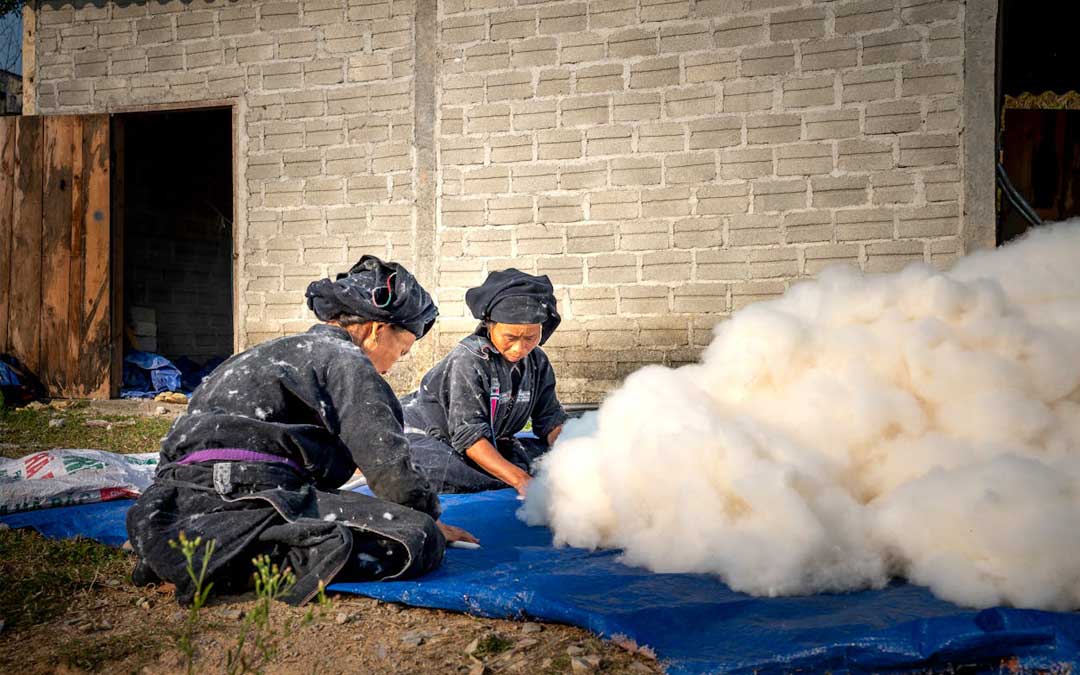Fast fashion more dangerous than we think!

The kernel that generated this article was my investigation into why stains are so hard to remove from some fabrics. The short answer is that over 85% of cheaper garments are made from petrochemicals – oil and coal – which absorb ‘stains’ and don’t release them easily or at all. In exploring this I learnt that environmental degradation from petrochemical textiles – the textiles that are termed fast fashion and worse still, ultra-fashion but also cheap clothing – is vast and affects every aspect of our environment.
Most fast fashion and ultra-fast fashion* garments are made from polyester or cotton. Polyester and other synthetic fabrics are not only made from petrochemicals but the factories they are made in, in places like China and India, use dirty fossil fuels which pollute the air and waterways. Other synthetic fabrics made from petrochemicals include acrylic, nylon, acetate and spandex. Petrochemical products are also used to ‘finish’ garments. This includes those that extend the life of a garment, non-flammable chemicals and textile dyes all of which are highly pollutant. This industry is the second-largest consumer of water on the planet and the second-largest producer of wastewater – water that is toxic and cannot be reused.
Cotton the second most commonly used fabric after polyester, uses a phenomenal amount of water in its processing and pollutant pesticide in its production. Pesticides end up in soil and waterways as do toxic dyes.
Petrochemical textiles shed microfibres that enter the soil, waterways, our oceans, the food chain and us.
Textile recycling into new fabric is not the answer as perhaps many people think. Separating the fibres is an expensive and intensive process using more fossil fuels and water. Fabric ends up in landfill which gives off carbon and methane. Only about 20% of fibres from a garment are recycled and only 1% of garments remain out of landfill.
Land clearance is a product of fast fashion. The need for fast fashion has increased not just because it is cheap but also because the world’s population is growing rapidly. To produce fabric, land clearance has expanded rapidly to grow crops such as cotton. This impacts local communities who often lose their traditional sources of income, their waterways which are polluted by pesticides and soil erosion, and biodiversity with mono-agriculture replacing forests.
Animals and aquatic life are seriously impacted by fast fashion production with the main culprits being toxic dyes and microfibres that end up in the food chain via waterways. Animals and fish ingest these and we do as a result. Wildlife also loses its habitat and this has a huge impact on biodiversity.
Faux fur a product with all the problems of other synthetic materials is more expensive than real fur so much of it has been replaced by dog and cat fur. These animals are farmed in atrocious conditions.
Leather is a huge pollutant. To stabilise leather so it won’t break down toxic chemicals like arsenic, formaldehyde and coal-tar products are used. The leather industry uses enormous amounts of water in leather production and produces waste such as lime sludge, acids, salt and sulphides. It also requires huge areas of cleared farmland to graze the cattle which requires land clearing and results in the loss of habitat for wildlife and biodiversity.
In human terms, as if the above was not enough, people living in 3rd world countries are the direct victims. People, mostly women and girls, work in terrible conditions for low pay to produce that low-cost clothing that the fashion shops and department stores make their billions from. Families are displaced from their traditional sources of income by mass clearing of land; the air, water and soil around them are polluted with dangerous toxins; and high levels of cancers such as leukaemia are associated with some dyes and processing methods.
I am mindful that suggesting that consumers spend more money when the cost of living is high is often unwelcome. However, changing our behaviour so that we purchase new or secondhand clothing that will last for years and years using fabrics such as linen, recycled wool, silk, recycled organic cotton, organic hemp and some newer innovative fibres (see article below from Good on You)is also a way of balancing the budget. A couple of items that will last long term is a better investment than many cheap items that are intended to be disposable and designed to bring you back to the shop for more. Do we really want to be purchasing clothing that pollutes the world, accelerates climate change and exploits vulnerable women and girls?
* trendy fashion that copies designer fashion and is produced within weeks (as little as 2 weeks), is made from cheap fabric (petrochemical textiles) and designed to be worn a couple of times and thrown away. The speed and cheapness create tremendous waste and pollution, accounting for 10% of global emissions and is the second largest consumer of water.
References:
What is fast fashion and why is it so bad?
Fast fashion and its environmental impacts (This article quotes reports from credible organisations about the quantifiable use of resources).
Fast Fashion(Good advice on how to clothe yourself ecologically).
What are the best lower-impact fabrics and fibres on the Fast Fashion market right now?
Choice: Is it faux or is it real?
Written by Robin Gale-Baker
